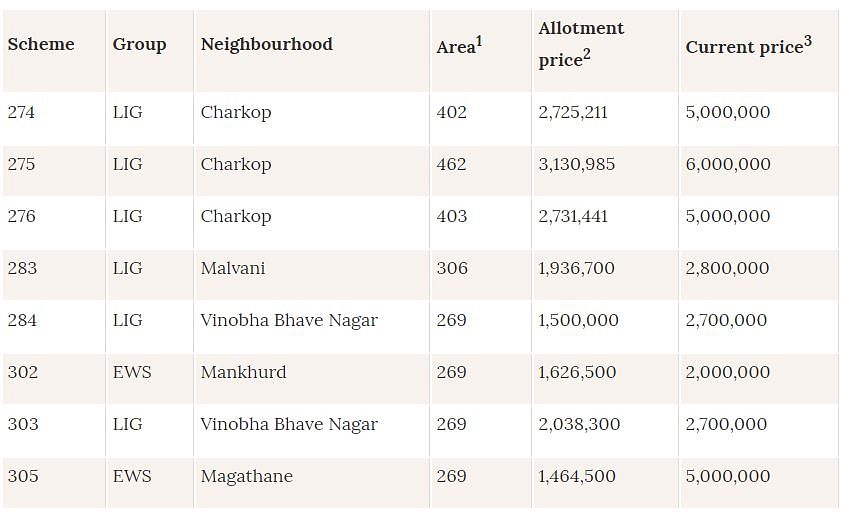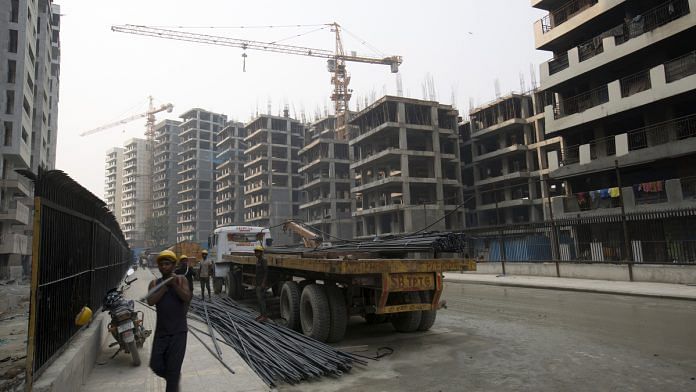Programmes involving sale of subsidised houses to lower-middle-class households have been spearheaded in all major Indian cities by state-level development boards. These boards were created under India’s Second Five-Year Plan (1951-1956) that provided central government funding to states to develop low-income housing (Pornchokchai 2008). The same development plan advocated for cooperative, citizen ownership in all sectors of the economy; as a result, the housing boards developed apartments that would be sold, rather than rented, to individuals, and buildings that would be collectively maintained by all owners (Ganpati 2010, Sukumar 2001).
This policy of construction for ownership continued even as the central government’s development plans moved towards policies favouring the facilitation of private construction after the economic liberalisation of the 1990s. Moreover, in 2015, India’s federal government claimed a housing shortfall of over 18 million to motivate a plan, Pradhan Mantri Awas Yojana (PMAY), to build 20 million affordable homes by 2022. Grants to subsidise the construction and sale of low-income housing by local municipal boards remain a central component of this policy.
The subsidy constitutes wealth transfers to beneficiaries, experienced in any combination of three payout structures: through housing benefits for those who choose to live in the subsidised home, through cash benefits for those who choose to rent it out, or lump-sum (Rs. 661,700 to Rs. 2,869,015) through resale. Aside from transferring wealth directly, these interventions also facilitate the purchase of an asset that has great potential for appreciation in value, particularly in growing cities, and forms the cornerstone of wealth accumulation for many families.
Also read: Affordable housing gets another boost as Budget again cuts loan interest
The intervention and methodology
In recent research (Kumar 2019a, Kumar 2019b), I study a subsidised housing programme implemented in Mumbai by the Maharashtra Housing and Area Development Authority. MHADA runs subsidised housing programmes for economically weaker section (EWS) and low-income group (LIG), urban residents who: (1) do not own housing, and (2) who have lived in the state of Maharashtra for at least 15 continuous years within the 20 years prior to the sale. Winners have access to loans from a state-owned bank, and most take out 15-year mortgages. While the down payment and mortgage leave this programme out of the reach of many of the city’s poorest residents, it gives eligible middle-class families without property, the opportunity to purchase heavily subsidised apartments.
Because this programme, like most others run by state housing boards, allocates apartments through a randomised lottery system, a study of winners and non-winning applicants can be thought of as a randomised experiment. During September 2017-May 2018, I worked with a Mumbai-based NGO called ‘PUKAR’ and surveyed a total of 834 winners and non-winners of multiple lotteries that took place in Mumbai in 2012 and 2014, to understand the effects of the intervention on an array of outcomes. The groups of winners and non-winners surveyed are similar, on average, across an array of characteristics, such as caste, religion, and other socioeconomic indicators. Information about the area, cost, and down payment for the apartments in the included lotteries can be found in Table 1.
Table 1. Lottery apartments included in the sample

Notes: (1) In square feet. Refers to ‘carpet area’, or the actual apartment area and excludes common space.
(2) Price (in Rs.) at which winners purchased the home with the cost stated in the lottery
(3) Average sale list price of a MHADA flat of the same square footage in the same community. Data collected from magicbricks.com
Also read: A ‘major’ hiccup in Modi’s rural housing target — 4 BJP-ruled states
Findings
I first investigated whether or not winners reinvested the subsidy in their children. I found large effects on children’s educational attainment and employment outcomes. The average number of years of education among winning households is 0.24 standard deviations1 or over a half year greater than that of non-winning households. In other words, the intervention shifts households from roughly the 63rd to 73rd percentile of family-wise average years of education in Mumbai, based on data from the India Human Development Survey (IHDS)-II (2017).
This shift reflects an effect on individuals’ likelihood of completing secondary and post-secondary education, with increases concentrated among school-age children (youth). Among household members who turned 16 after the lottery, for example, the intervention increases the likelihood of continuing schooling past grade 10 by 13 percentage points. Among household members who turned 21 after the lottery, the intervention increases the likelihood of completing post-secondary education by 15 percentage points. Also, the intervention increases levels of employment among individuals by 4 percentage points; this effect size is 17.3 percentage points for youth who turned 21 after the intervention, or those who had the chance to complete their education. The overall employment effects actually represent a larger 7.4 percentage-point increase in full-time labour, and a decrease in rates of part-time, or casual, employment.
There are many possible reasons for these effects, including shifts in budget constraints, attitudes about the future, and the perceived returns to education. Relocation perhaps does not explain effects, as winners live on average in neighbourhoods with poorer school quality and lower rates of literacy and employment than non-winners. I do find evidence to suggest that the intervention leads to changes in attitudes and preferences. Winners report feeling happier about their financial situations, expect better lives for their children, are more likely to plan to stay in the city permanently, and have slightly more ‘individualistic’ attitudes. Attitudes and beliefs potentially have important effects on households’ investment decisions. Recent work (for example, Mani et al. 2013, Haushofer and Fehr 2014) has found that the insecurity created by poverty can make it difficult to focus on long-term goals, and leads to short-sighted behaviour.
Beneficiaries may be particularly motivated to improve local governance to protect the value of this housing and their new wealth. I find that on average, winners are roughly 29 percentage points more likely than non-winners to report attending ward-level meetings where local community improvements are discussed. They are also 14 percentage points more likely to report individually approaching bureaucrats and politicians to demand improvements for their communities, 11 percentage points more likely to report doing so in groups, and 11 percentage points more likely to be able to correctly name a local elected official. Effects are accompanied by changes in attitudes and an increased interest in local-level issues.
This local-level participation is not confined only to those living in the new apartment buildings. Winners are not obligated to relocate to the homes, but can rent them out. Even so, landlords, or those who rent out the homes, may seek to improve communities to increase the rental or resale values of the homes. Fifty-nine per cent of landlords travel considerable distances to the lottery homes to participate in collective action in the communities in which they own homes but do not live, suggesting strong incentives for organising that are separate from the effects of social pressure within a community. While Kapur and Nangia (2015) have argued that the Indian government allocates greater spending to welfare programmes than the provision of basic goods and services, these findings suggest that at least some welfare programmes may themselves affect the provision of basic goods and services through their effects on local civic action.
Note:
- Standard deviation is a measure that is used to quantify the amount of variation or dispersion of a set of values from the mean value (average) of that set.
The author is a PhD candidate in political science at the University of California, Berkeley. Views are personal.
This article was first published on Ideas For India (I4I).






